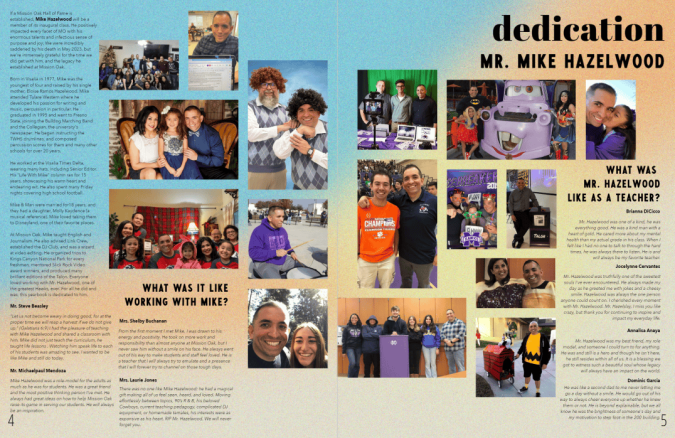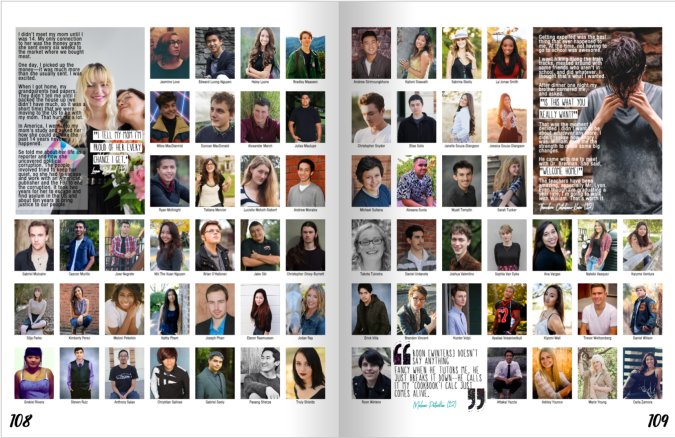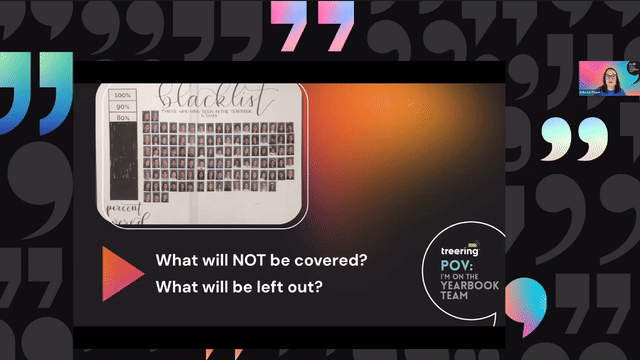
Erikalinpayne
October 15, 2024
2
Min Read Time

Thinking critically about yearbook coverage is an editorial mind shift. Shiny things such as theme art and backgrounds often take precedence. Yearbook coverage highlights all the memorable people and events. And there is a flip side: planning yearbook coverage is also a conscious decision on what you’re not going to cover.
Yearbook price, page count, and–gasp–traditions limit coverage. For Treering schools, page count directly influences the price point. Your per-book price is based on the core page count (does not include custom pages), and cover finish.
For those with a class or club, a coverage budget helps you and your team be intentional. Start by listing the sections in your book. Then budget spreads to each section.

We don’t mean the fun ones like Yerdsgiving or distribution. No matter the school size, there is an element of expectation on you as the adviser. Be aware of the sacred cows of your yearbook program. These can range from color palettes to the ultimate sacred cow, senior quotes. (We interrupt this blog to give you the resource you didn’t know you needed: three reasons to get rid of senior quotes and how to replace them.)
If you're willing to take the energy to fight tradition, and have a clear reason, go for it.
For example, when my school hit 11 years, my students deviated from alternating purple and black covers. They created a blue and red book, with PK-6 on one side and 7-12 on the other. Their reasoning? For the first time in school history, there were separate principals for the upper and lower schools.
My students wanted to highlight how each grew independent of the other, and instead of pushing to do two smaller books, recognized the power of us all still being in one building. The yearbook students saw it as a picture of unity; the other students saw it as the school spirit equivalent of treason. Bottom line: blue and red make purple. Once that line made it around campus, everyone loved the book. Ten years later, we have not published a purple or black book.
Change takes time.
This is our coverage mantra. When you highlight people, your yearbook develops an emotional connection as students see their art, stories, meaningful quotes, and photos of their experiences. Every student wants to know they were in it. They were included. Their story was deemed valuable enough to be in the yearbook.
We're always going to highlight people over the events. People happen in the context of the events, and in each event, highlight those behind the scenes, up front, and watching. Remember:
You need not think each will get a spread. Modular design is a way to fit more content in and do it stylishly. (If you don’t want to start from scratch, Treering themes “POV,” “Tied Together,” and “Crafted” have modular layouts from which you can model.)
We want to move away from students opening the book, finding their name or face, and moving on. Below are some ideas to help you add stories and make them dynamic so people pause their perusal to get personal.

Dedications, Retirements, and Unsung Heroes: Every school has one teacher, volunteer, or student leader who positively impacts school culture. Honor their impact with a small write up or a full-spread dedication.
Future Plans: Publish elementary school “What I want to be…” and high school post-graduation plans.
Trends: Waterbottles, fashion, and laptop stickers are great. The stories behind them are better.

Personality Profiles: We love making room for additional stories by shrinking portraits and adding content.
Pets: Pets are an easy way to cover camera-shy students or get families started with crowdsourcing.

School Map: Students spend 8-12 hours on campus. Find out where the best study and nap locations are. Interview athletes from each sport who practice on the turf.
Interactive Pages: One thing we saw multiple times during the duration of TRL 24 was “Guess Who?” spreads and modules:
People also loved the Treering About Me pages.
Many students are easy to cover three times because they fell into the 1-2-3 coverage pattern:
For those who do not, use the coverage ideas above to get them in the book.

We understand that the same events occur year after year. Challenge yourself to cover them in two new ways. How will you and your yearbook team give a fresh take on the students on your campus this year?
This blog is adapted from Brent Mikolaycik and Erika Lin Payne’s Coverage Ideas session from TRL 24 POV: I’m on the Yearbook Team. Mikolaycik and Payne came to Treering Yearbooks after nearly two decades as classroom teachers and high school yearbook advisers.